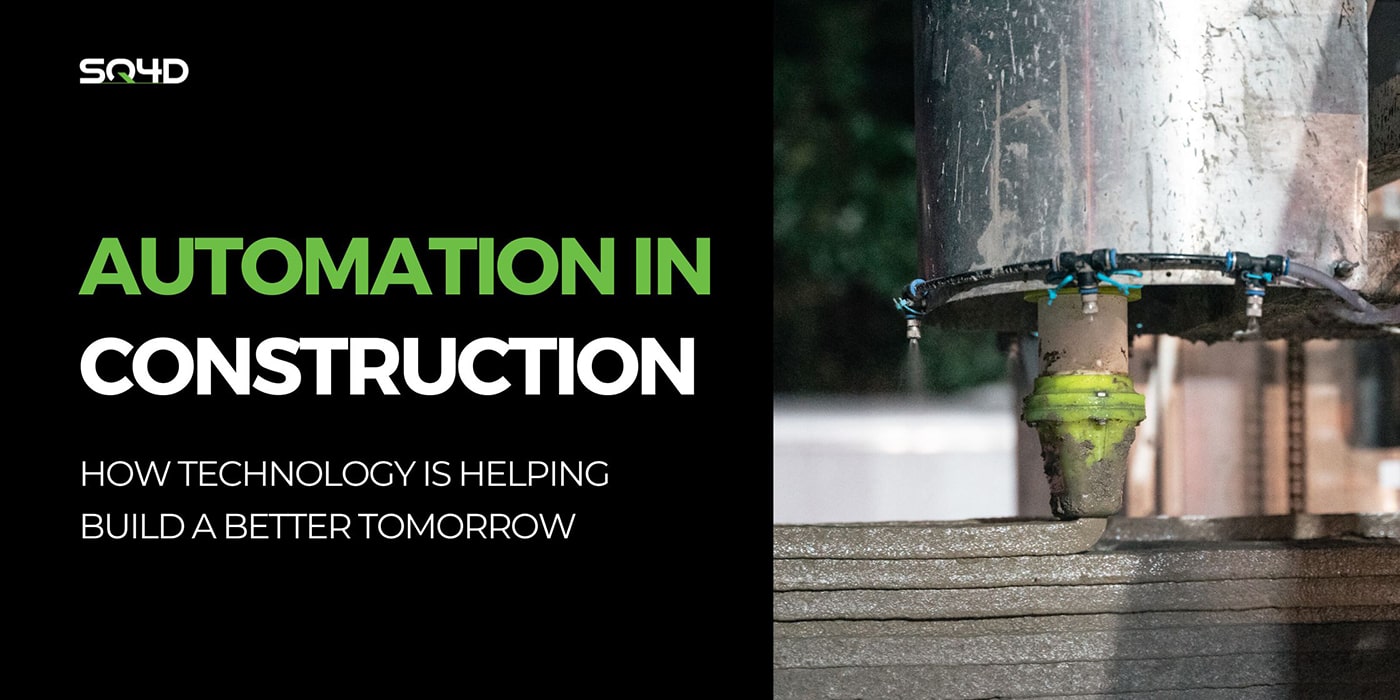
Automation In Construction
How Technology is Helping Build a Better Tomorrow
In today’s modern world, automation is the name of the game. Automation has been used to revolutionize the way that industries operate, and in the case of construction, this is no different.
As technology advances, more and more construction companies are looking to implement automated processes to improve workflow and increase efficiency. Automation can help streamline physical tasks and enable greater accuracy in building plans, making for a safer and faster construction process overall.
But just what is automation in construction, how can it help, and what do we need to consider when implementing automated processes?
What Is Automation in Construction?
Put simply, automation in construction refers to the use of digital or robotic systems that take on certain tasks during the building process.
This could include anything from automated systems that control temperature or lighting levels within a building, all the way to robotics that 3D print a home.
By utilizing automated processes, construction firms can reduce costs while increasing safety levels on-site. Additionally, automation allows for greater accuracy when it comes to constructing buildings since robots are less prone to human error than manual labor.
A Few Benefits of Automating Construction Processes
Automated processes offer many benefits for construction workers and businesses alike. Here are just some of the ways that automating certain processes can be beneficial:
- Increased Safety Levels: Robots are typically far less prone to making errors than humans, meaning that there is less chance of an accident occurring on-site due to human error. By using robots instead of manual labor, safety levels can be significantly improved on construction sites.
- Reduced Costs: Using automated processes can reduce labor costs as fewer people will be needed on-site to carry out various tasks, all jobs that can now be done by robotic systems at much lower costs. Additionally, as robots don’t suffer from fatigue like humans, they can perform long hours with no breaks which further reduces labor costs.
- Faster Build Times: Robots can work much faster than manual labor, resulting in projects being completed quicker than ever before.
- Improved Accuracy – With robotic systems being so precise, mistakes made by human workers are greatly minimized, resulting in overall better quality results.
- Reduced Environmental Impact: Automation helps reduce waste by eliminating human error, thus reducing material consumption on projects. Furthermore, certain automated tasks such as concrete 3D printing utilize remarkably low amounts of electricity to run, depending on the brand of concrete 3D printer.
Uses Of Automation In Construction
- Surveying and Mapping: Construction drones equipped with cameras and sensors can survey and map large construction sites quickly and accurately.
- Material Handling: Automated material handling systems can transport building materials around a construction site, reducing the need for manual labor and improving efficiency.
- Equipment Operation: Certain automated construction equipment can perform tasks faster and more accurately than manual labor, reducing the risk of human error and improving safety.
- 3D Printing: From 3D printing small components to full-sized structures, additive manufacturing is impacting the field at all levels.
- Quality Control: Automated quality control systems can inspect construction work and ensure that it meets specified standards and requirements, reducing the risk of defects and rework.
- Project Management: Automated scheduling and project management systems can improve communication and coordination between teams, reducing the risk of delays and increasing project efficiency.
How To Implement Automation In Construction
The most important factor when considering implementing automation into your business model is safety. All considerations must be made with regards to worker safety first before any changes are implemented into existing processes, especially if these involve robotics or other advanced technologies like AI (Artificial Intelligence) enabled drones etc.
It’s also important to take note of local laws governing the use of such technologies before implementation starts, as these may vary depending on location (and even country).
Finally, a comprehensive risk assessment must also be carried out prior to any changes being made; this will help identify potential hazards associated with the introduction of automated technologies, as well as provide guidance on how best to minimize these risks while still achieving desired goals efficiently.
Once you’re confident with safety protocols, you may decide which areas within your business model could benefit most from automation, whether it’s ordering supplies, managing data, constructing foundations and walls, etc.
Once identified, research should then follow into which products/services available would best meet those needs within budget constraints (if applicable).
It’s crucial at this stage to look for vendors offering aftercare services, such as maintenance, repairs, and software updates if applicable, so that support is readily available whenever required without incurring additional expenses down the line due to unforeseen issues.
Finally, training staff should come next; this doesn’t necessarily mean lengthy courses, but should cover basic operation procedures for each technology being introduced, especially if people will come into contact with robotics/AI devices directly (for example installing them on-site).
It’s essential that everyone involved understands how each device works so that they know what they’re doing when necessary/instructed upon installation/operation orders et cetera. Ultimately though, this step makes sure everyone involved has confidence in utilizing new technologies working safely alongside them; thus reducing potential issues arising during operation moving forward.
Conclusion
There is little doubt that automation offers huge advantages over traditional methods when it comes to constructing buildings today, including cost savings, environmental considerations, and improvements in safety, speed, and quality too.
That being said, comprehensive research is always recommended before committing funds into such projects, ensuring all angles have been covered.
Following this though, today’s businesses now find themselves well-equipped with an array of enhanced offerings ready at their disposal, providing smoother operations as well increased output, all thanks to automation in construction!